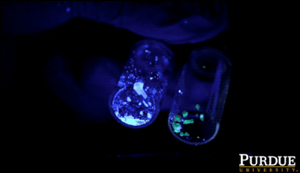New material points toward highly efficient solar cells
13. 11. 2019 | Purdue University | www.purdue.edu
A new type of material for next-generation solar cells eliminates the need to use lead, which has been a major roadblock for this technology.
Solar cells, incorporating the mineral perovskite, have been the focus of attention since the material was first shown to work in 2009. Solar cells that are built using this material are more efficient than current solar panels. Current solar panels capture 15% to 18% of the solar energy on average, while perovskite solar cells have been found to be as much as 28% efficient.

But there are major obstacles to using these materials commercially: The materials are not stable, and they contain water-soluble lead, which is a health hazard. Now a team of scientists and engineers led by Letian Dou, assistant professor of chemical engineering at Purdue University, have developed a sandwich-like material incorporating organic and inorganic materials to form a hybrid structure that doesn't use lead and has much improved stability.
Read more at Purdue University
Image Credit: Purdue University
-jk-




